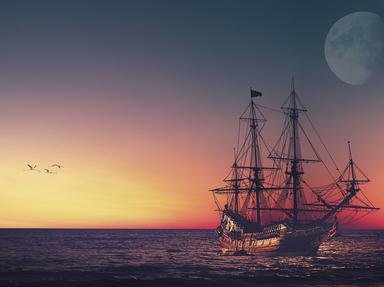Quiz Answer Key and Fun Facts
1. 1488, Sailed for Portugal, First European to see the Cape
2. 1497, Sailed for Portugal, First to sail around the Cape to reach India
3. 1519, Sailed for Spain, Elcano actually sailed around the Cape
4. 1500, Sailed for Portugal, Claimed Brazil before sailing around the Cape
5. 1503, Sailed for Portugal, Raided the Persian Gulf, Sailed into the Red Sea
6. 1651, Sailed for the Netherlands, Established colony at what became Cape Town
7. 1768, Sailed for Britain, Mapped areas in the Pacific Ocean
8. 1577, Sailed for England, First captain to complete circumnavigation
9. 1787, Sailed for Britain, Commander of First Fleet, Governor of New South Wales
10. 1500, Sailed for Portugal, First European to sail to Madagascar
Source: Author
ponycargirl
This quiz was reviewed by FunTrivia editor
bloomsby before going online.
Any errors found in FunTrivia content are routinely corrected through our feedback system.
